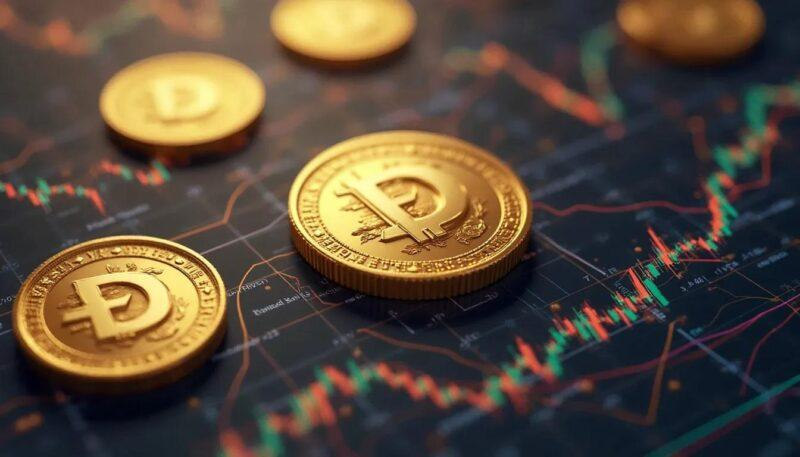In a world where cryptocurrency transactions are becoming increasingly popular, one digital currency has captured the attention of investors and traders alike: Dogecoin. Known for its fun-loving Shiba Inu mascot, Dogecoin has quickly risen in value and popularity. However, behind its whimsical exterior lies a complex world of transaction costs that can greatly impact users. In this article, we will take a deep dive into the world of Dogecoin’s transaction costs, unpacking the factors that influence them and how they can affect your overall experience with this unique cryptocurrency.
Understanding Dogecoin’s Transaction Costs
Dogecoin’s transaction costs are an integral part of understanding how this cryptocurrency operates within the blockchain network. One key factor that affects transaction costs is the size of the transaction in kilobytes. The larger the size, the higher the transaction fee will be. This is due to the additional data that needs to be processed and stored on the blockchain.
Another factor to consider is the current network congestion. During periods of high activity, such as when there is a surge in transactions, the network fees can increase significantly. This is because users are competing for limited space within blocks, leading to higher fees to ensure their transactions are processed in a timely manner.
It’s important to note that transaction costs are not fixed and can vary depending on the specific circumstances of each transaction. Factors such as the level of security desired, the speed at which the transaction needs to be processed, and the current network conditions all play a role in determining the final cost. By understanding these factors, users can make informed decisions when sending and receiving Dogecoin.
Analyzing the Factors Impacting Transaction Fees
When it comes to understanding the factors impacting transaction fees in the world of cryptocurrency, Dogecoin stands out as a unique case study. The transaction costs associated with Dogecoin have been a subject of interest for many investors and enthusiasts alike. In this deep dive analysis, we will unpack the key elements influencing the transaction fees of Dogecoin.
One of the primary factors that contribute to the transaction fees of Dogecoin is network congestion. Similar to other cryptocurrencies, when the network is experiencing high levels of activity, the fees tend to increase. This is due to the limited capacity of the blockchain to process transactions efficiently during peak times. Network congestion can lead to delays in transaction confirmations and higher fees for users looking to prioritize their transactions.
Another important aspect to consider when analyzing Dogecoin’s transaction costs is the implementation of the coin’s underlying technology. The use of the Scrypt algorithm sets Dogecoin apart from other cryptocurrencies, influencing the speed and cost of transactions. By understanding the technical specifications of Dogecoin, investors can gain insights into the factors impacting transaction fees and make informed decisions when engaging with the cryptocurrency.
Comparing Dogecoin’s Fees with Other Cryptocurrencies
In the world of cryptocurrencies, transaction fees can vary greatly from one digital asset to another. When it comes to Dogecoin, its fees have been a subject of interest and debate among users and investors. Let’s take a closer look at how Dogecoin’s transaction costs stack up against other popular cryptocurrencies.
Bitcoin:
- Bitcoin transaction fees can be quite high during peak times due to network congestion.
- Miners prioritize transactions with higher fees, leading to potential delays for lower fee transactions.
- On average, Bitcoin transaction fees can range from a few dollars to tens of dollars per transaction.
Ethereum:
- Ethereum transaction fees can also be volatile, especially during periods of high network activity.
- Gas fees on the Ethereum network can vary based on the complexity of the transaction.
- Users have the option to adjust gas fees to prioritize speed or cost efficiency.
Dogecoin:
- Dogecoin transaction fees are known for being extremely low, making it a cost-effective option for sending and receiving funds.
- The average transaction fee for Dogecoin is typically less than a penny, regardless of network activity.
- This factor has contributed to Dogecoin’s popularity as a practical and accessible digital currency for daily transactions.
| Cryptocurrency | Average Transaction Fee |
|———————|——————–|
| Dogecoin | Less than a penny |
| Bitcoin | A few dollars to tens of dollars |
| Ethereum | Varies based on network activity |
Strategies to Minimize Transaction Costs
Understandably, navigating transaction costs in the world of cryptocurrency can be a complex task. However, with the right strategies in place, minimizing these costs becomes more achievable. Dogecoin, known for its low fees and fast transaction speeds, offers users a unique opportunity to explore ways to further reduce transaction costs. Here are some strategies to consider when looking to minimize transaction costs while using Dogecoin:
- Consolidate Transactions: By bundling multiple transactions into a single one, users can save on fees associated with each individual transaction.
- Timing Transactions: Choosing the right time to make a transaction can impact the fees you pay. Monitoring network congestion and choosing off-peak times can help reduce costs.
- Utilize SegWit Addresses: Segregated Witness (SegWit) addresses help optimize transaction capacity, resulting in lower fees. By using SegWit addresses, users can enjoy reduced costs while sending Dogecoin.
In addition to the strategies mentioned above, staying informed about network updates and new technologies can also play a crucial role in minimizing transaction costs. By actively engaging with the Dogecoin community and keeping up-to-date with developments, users can adapt their strategies to take advantage of cost-saving opportunities. Experimenting with different approaches and learning from others in the community can lead to a deeper understanding of how to effectively manage transaction costs when using Dogecoin.
Future Outlook for Dogecoin’s Fee Structure
In examining the , it is crucial to understand the current state of transaction costs within the network. Dogecoin, known for its low fees compared to other cryptocurrencies, has recently seen a rise in transaction fees due to increased network activity. This trend has raised concerns among Dogecoin users and developers alike, prompting a closer examination of the fee structure.
One key factor impacting Dogecoin’s transaction costs is the network’s block size limit. As more transactions are processed within each block, the competition for block space increases, leading to higher fees. To address this issue, developers are exploring potential solutions such as increasing the block size limit or implementing a fee market to prioritize transactions based on fees paid.
Additionally, Dogecoin’s fee structure may evolve in response to market demands and technological advancements. With the rise of layer 2 scaling solutions like the Lightning Network, Dogecoin could potentially leverage off-chain transactions to reduce fees and increase network scalability. As the cryptocurrency landscape continues to evolve, Dogecoin’s fee structure will likely adapt to ensure the network remains efficient and accessible to users.
Q&A
Q: What are the transaction costs associated with Dogecoin?
A: The transaction costs associated with Dogecoin can vary depending on network congestion and the size of the transaction.
Q: How are transaction costs calculated in Dogecoin?
A: Transaction costs in Dogecoin are calculated based on the size of the transaction in bytes and the current network demand.
Q: Are there ways to reduce transaction costs on the Dogecoin network?
A: Yes, users can reduce transaction costs on the Dogecoin network by sending transactions during off-peak hours or using a transaction accelerator service.
Q: Can transaction costs on Dogecoin be influenced by external factors?
A: Yes, transaction costs on Dogecoin can be influenced by external factors such as network congestion, market volatility, and the overall demand for transactions.
Q: How do transaction costs compare between Dogecoin and other cryptocurrencies?
A: Transaction costs for Dogecoin are generally lower compared to other cryptocurrencies like Bitcoin and Ethereum, making it an attractive option for users looking to minimize fees.
Key Takeaways
As we conclude our deep dive into Dogecoin’s transaction costs, we hope that you have gained a better understanding of the complexities involved in this popular cryptocurrency. From network fees to block rewards, the world of cryptocurrency can be a complex and ever-evolving landscape. Remember to stay informed and continue learning as the market continues to grow and change. Thank you for joining us on this journey, and we look forward to exploring more crypto topics with you in the future. Happy trading!







